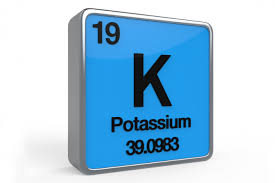What is potassium?
Potassium is a foods mineral . It is also an electrolyte and its denoted by K letter in chemistry . potassium electrical impulses throughout the body. They assist in a range of essential body functions, including:
- blood pressure
- normal water balance
- muscle contractions
- nerve impulses
- digestion
- heart rhythm
- pH balance (acidity and alkalinity)
Potassium isn’t produced naturally by the body, so it’s important to consume the right balance of potassium-rich foods and beverages. Consuming too little potassium can lead to serious health consequences. However, taking in too much can also cause temporary or long-term health problems. Healthy kidneys maintain normal potassium levels in the body because they remove excess amounts through urine.
SOURCES
Sources of potassium
Potassium is most commonly derived from foods. Potassium-rich sources include
fruits, such as apricots, bananas, kiwi, oranges, and pineapples
vegetables, such as leafy greens, carrots, and potatoes
lean meats
whole grains
beans and nuts
Potassium intake is influenced by energy intake and food choice:
Dietary potassium intake is related to energy intake, and the higher intake of males may be explained by their higher energy intakes. When potassium intake is examined after adjusting for energy intake, potassium density of the diets of all females 2+ years, y , as well as those 20+ years is significantly higher than those of their male counterparts (p<0.001). However, when adults are examined by age groups, there are no differences between males and females. Gender differences in potassium density may be related to food choices.
Diets of older adults have higher potassium density than the diets of younger adults
Diets of adult males and females 20-39 years have a significantly lower potassium density than the diets of corresponding counterparts 40 years and older (p<0.001). Total potassium intakesbetween these age categories are not significantlydifferent , thus differences per 1000 kcal of energy are most likely explained by differences in food choices.Distribution of potassium intake by selected percentiles on the reporting day.
Values at selected percentiles of potassium intake for children and adults on the reporting day. most individuals are consuming less than 4700 mg on a given day. On the reporting day, less than 25% of males were consuming at least 4700 mg potassium, whereas less than 1% of females were consuming 4700 mg. Given available evidence regarding potassium intake and its relationship to hypertension, kidney stones, and bone health, most individuals would benefit from increasing dietary intake of foods high in potassium.
Does potassium intake differ by race/ethnicity or income?
When considered by race/ethnicity, potassium intake of Non-Hispanic black males 20+ years was significantly lower compared to Non-Hispanic white and Hispanic adult males (p<0.001), as shown in Figure 4. Non-Hispanic black females 20+ years had significantly lower intake compared to Non-Hispanic white adult females Day 1 dietary intake data, weighted, excluding breastfed infants.
only p<0.001). Differences between children and adolescents were not significant data not shown). For all individuals 2+ years, those at income levels greater than 300% of poverty threshold had significantly higher intakes than those whose income levels were 300% or less (p<0.001) .









0 comments:
Post a Comment